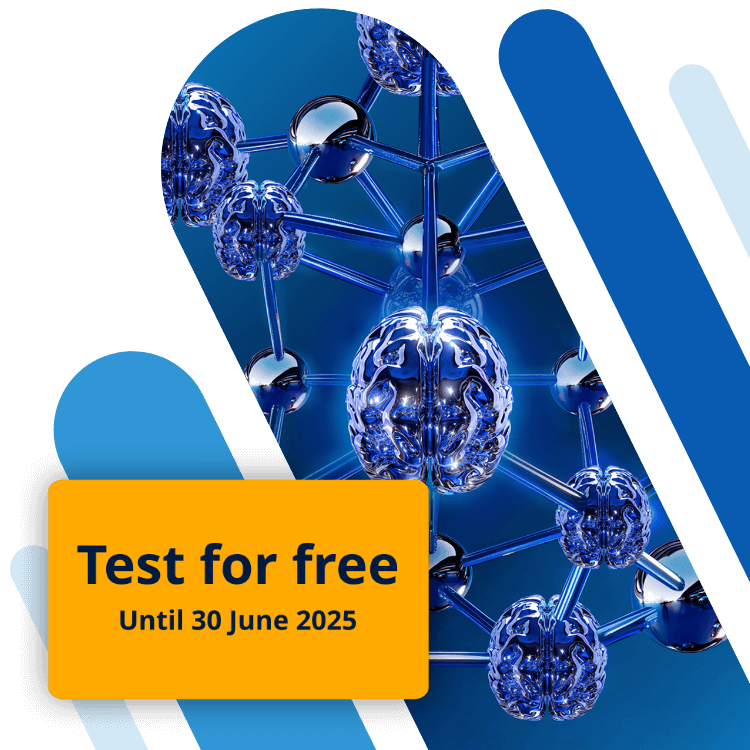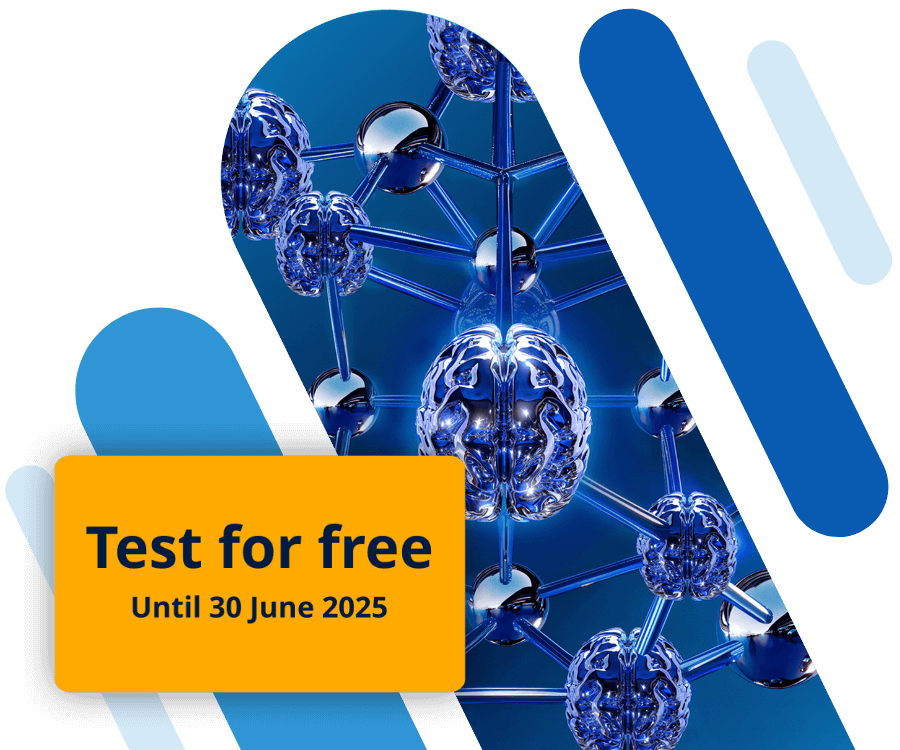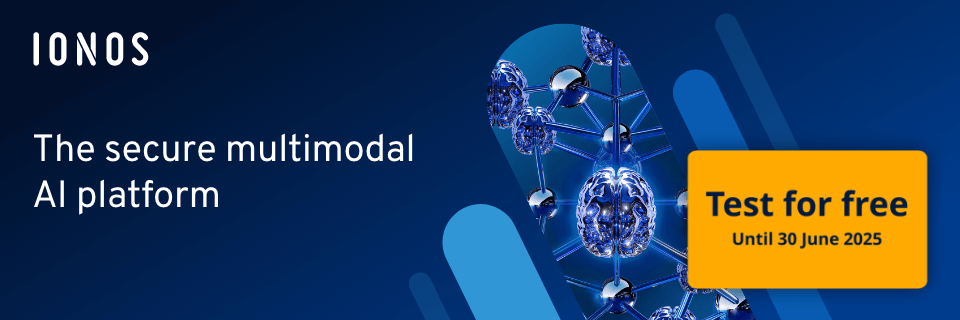Deep Learning: When the human brain becomes a model
If you talk to Siri or Google Assistant, you’re already using deep learning. Without this technology, these voices from smartphones and speakers wouldn’t be able to understand our spoken language and deliver relevant answers.
Deep learning is no new phenomenon, but only in the last few years has it been improved to the extent that it can provide real value, taking its first step into our day-to-day lives. Development in the field is moving rapidly, too. Mega-corporations like Google are doing serious research into deep learning – and not only so that one day we can have human-like chats with Google Assistant. There is a whole wealth of possible applications.
We explain how this technology works, what its strengths and weaknesses are, and what fields of application are available today as well as for the future.
What is Deep Learning?
As far as humans are concerned, for computers to be intelligent they have to be able to do one thing above all: learn independently. Because of this, deep learning is an area of the scientific research field of artificial intelligence. More specifically: It is a subsection of machine learning. There are many different methods for implementing machine learning: one such method is deep learning.
Deep learning is a subsection of machine learning, in which computers process large quantities of data with the aid of neural networks that mimic the human brain. With the help of new information, existing connections can be changed and expanded on for the system to learn new things without human interference, allowing better and better decisions and projections to be made.
Artificial neural networks are used for processing information, consisting of an entry layer, one or multiple intermediate layers, and an output layer. Information encounters the entry layer as an input vector and is weighted in the intermediate layers using artificial neurons, before finally a certain pattern is produced on the output layer. The more layers an artificial neural network contains, the more complex the tasks handled by the AI can be.
Example: Image recognition
Sorting images according to whether dogs, cats or people can be seen in them is a challenging task for a computer. Something that is immediately clear at a glance to humans requires a computer to analyse individual image characteristics.
With deep learning the raw data input, in this case the image, is analysed layer by layer. In the first layer of an artificial neural network, for example, the system examines the colours in the individual image pixels. Each image pixel is processed with its own neuron. In the following layer, edges and shapes are identified and, in the layer after that, more complex characteristics are examined.
The information collected is displayed in a flexible algorithm. The results from one layer are carried onward into the following layer and change the algorithm. In this way, the computer is able to use a variety of operations to come to the conclusion of whether an image can be categorised as a dog, cat or human.
At the start is the training period, errors in categorisation are corrected by humans, allowing the algorithm to adapt. After a short time, it can improve its image recognition independently. As the interlinking between the neurons in the network changes and the weighting of variables within the algorithm is adapted, certain input patterns (different kinds of cat pictures) lead more and more accurately to the same output patterns (the cat being recognised). The more image material is available to the system for it to learn from, the better.
With deep learning, it isn’t always possible for humans to understand which patterns the computer recognised in order to reach its conclusions, particularly since the system continuously optimises its own decision-making rules.
History of Deep Learning
Deep learning is actually quite a recent term – it was first used in 2000 – yet the method of using artificial neural networks to enable computers to make intelligent decisions is several decades old.
Basic research in the field goes all the way back to the 1940s. Artificial neural networks were first developed in the 1980s. Back then, though, the quality of the decisions was disappointing, because machines’ independent learning – deep learning – requires large quantities of data, which at the time just weren’t available digitally. Only around the turn of the millennium did the age of big data begin, making deep learning interesting again for science and business.
Strengths and weaknesses
Compared with earlier AI technologies, deep learning is significantly more effective. That’s why the huge media interest in it is entirely justified, and interest in research too. Before the technology can reach its full potential, though, some weaknesses still have to be overcome.
Strengths of Deep Learning
One of the most important arguments in favour of deep learning is the quality of its results. In image recognition and speech processing, in particular, the technology is clearly superior to all others. Provided with high-quality training data, deep learning can carry out routine work much more efficiently and much faster than any human – without any signs of fatigue either, and with no change in quality.
With other forms of machine learning, developers analyse the raw data and periodically define additional features that the algorithm is to take into account while learning in order to improve the AI’s forecasting power. With deep learning, the system itself recognises useful variables and incorporates these into its learning process. After the initial training period it can learn without any human guidance, saving both time and money since skilled employees aren't necessary for future development.
Up to now, large quantities of data had to be labelled manually in order to make machine learning possible. In image recognition, for example, employees were required who would assign the label dog or cat to the images. With deep learning, the manual training period is significantly shorter. Above all this is relevant because, while general corporate practice certainly does involve collecting large quantities of data, only in rare cases does it exist in the form of structured data (telephone numbers, address, credit cards, etc.). In most cases it is stored as unstructured data (images, documents, emails, etc.). Unlike alternative methods of machine learning, deep learning can evaluate different sources of unstructured data while considering the task at hand.
The argument that the technology is too costly in practice for it to be applicable on a large scale is losing traction. Services like Google Visionor IBM Watson are increasingly emerging, allowing companies to build on existing neural networks instead of having to develop them from scratch. With this, in the future deep learning will be more and more capable of playing on its strengths in corporate practice.
An overview of strengths
- Better results than with other methods of machine learning
- No feature development and no data labelling necessary
- Efficient execution of routine tasks without affecting quality
- Problem-free handling of unstructured data
- More and more services to make it easier to use artificial neural networks
Weaknesses of Deep Learning
Deep learning requires an enormous amount of processing power to maintain the neural networks and to process the large quantity of data needed. The processing power largely depends on the complexity and difficulty of the task to be accomplished and the size of the data set used. Up to now, that made the technology expensive and only practicable for research and a handful of mega-corporations.
There has indeed been observable progress in this respect. What won’t change in the foreseeable future, though, is the fact that decisions made by deep learning are no longer transparent to humans. The neural network is (so far) a black box. For some applications where transparency is decisive, this makes the technology irrelevant.
For deep learning to work at all, large sets of training data are required. If these quantities of data aren’t available, computers aren’t yet able to deliver reliable results with the help of deep learning. The first libraries of neural networks are indeed being published, making the application of deep learning easier for the general public. However, the services are not suitable for every application, meaning that the development of learning algorithms for deep learning still demands a lot of time investment, and potentially takes more time than using alternative methods.
Weaknesses at a glance
- Requires high processing power
- Development of learning algorithms is relatively time-consuming
- A large data pool is necessary
- More training data needed than with other methods of machine learning
- Decisions difficult or impossible to understand (black box)
Application areas for Deep Learning
Deep learning is already being implemented in various sectors, and in the future we will come across it in many more areas of our day-to-day lives.
User experience
Some chatbots are already being optimised with deep learning so that they can react better and better to customers’ queries and relieve the burden on human customer support.
Voice assistants
As mentioned, deep learning is used for various voice assistants like Alexa, Google Assistant and Siri, which expand their vocabulary and speech comprehension independently.
Translation
Deep learning is already being used in some translation programs. Thanks to the technology, even dialects and text in images can be automatically translated into other languages, which wasn’t possible with previous machine learning applications that rely on structured data.
Creating texts
With the help of deep learning, computers are able to create texts that are not only correct in terms of grammar and spelling, but even imitate an author’s style – provided they are fed enough training material. In the first tests, AI systems aided by deep learning created articles for Wikipedia and deceptively real-looking Shakespearean texts.
Cybersecurity
AI systems with deep learning, with their independent and continuous learning, are especially well-equipped to identify irregularities in system activities, meaning they can alert to possible hacking attacks. The system can consult video material to better secure particularly vulnerable places like airports, because the computer is able to recognise abnormalities in the regular running of the airport.
Finance
The ability to detect anomalies can also be employed to great effect in the sensitive field of financial transactions. If the algorithm is trained appropriately, attacks on bank networks and credit card fraud can be repelled more effectively than they could be in the past.
Marketing and distribution
With the help of deep learning, AI systems can carry out sentiment analyses, meaning that they can filter angry messages from customers (chat and email) in order to send these on to human colleagues as priorities.
The systems could also autonomously take defined measures to restore customer satisfaction and avoid a cancellation. By evaluating the customer data collected in the CRM, systems with deep learning AI could also make predictions about how a customer will behave in the future in order to take targeted measures for customers that are ready to buy or customers considering cancelling.
Autonomous driving
Cars without human drivers safely forming part of road traffic is still a futuristic idea. The technology does exist, though, combining different deep learning algorithms: One algorithm recognises road signs, for example, while another is specialised in locating pedestrians.
Industrial robots
Robots with deep learning AI could be put to work in many sectors of industry. Simply by observing a human, the systems could learn how they have to handle machines and then optimise their own behaviour.
Maintenance
Particularly in the field of industrial maintenance there are important possible applications. For complex systems, a variety of parametres have to continually be monitored in order to guarantee safety. Deep learning could not only monitor these complex systems to ensure that they run without errors, but could also forecast which parts of a system will need to be maintained in the near future (predictive maintenance).
Medicine
Deep learning AI can scan images for anomalies much more precisely than a human eye, even a well-trained one. With the help of intelligent systems, CT or X-ray images can then be used to identify illnesses sooner than before, improving a patient’s chances of recovery.
Deep Learning: Great potential but not a universal solution
In public discourse to some extent there is the impression that deep learning is the only technology of the future for AI. It’s true that, in many application areas, deep learning makes much better results possible than previous procedures did. The enormous potential of artificial neural networks has far from been realised yet, and the application is still in its infancy.
However, deep learning is not the best technological solution for every problem. There are other strategies to make computers ‘intelligent’ – solutions that can also work with small datasets and where the decision-making is transparent for humans.
Some AI researchers view deep learning as a transitional phenomenon and believe that better approaches, not based on the human brain, will emerge. Google’s company strategy proves that these critical voices are not to be ignored: There, deep learning is just one part of the AI strategy. Alongside it are also further methods of machine learning, like the development of quantum computers.
- 100% GDPR-compliant and securely hosted in Europe
- One platform for the most powerful AI models
- No vendor lock-in with open source



